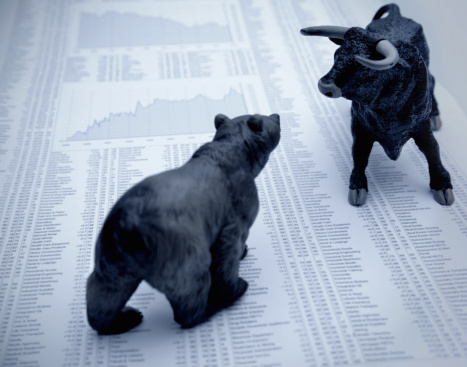Don’t get too complacent this time.
After 3 years of above-average returns in the markets, many analysts, bulge brackets, and financial institutions alike aren’t predicting a stellar year.
I was even surprised.
They aren’t negative rather realistically hopeful.
The average return for the S&P 500 is roughly 14%. After returning ~25% in 2021, this was above anyone’s wildest expectations. Many are speculating the S&P 500 will be flat, drop, correct multiple times, and grow bearish throughout 2022. Since Apple became the first U.S. company to hit a $3 trillion dollar market cap on the first day of trading for the year, there’s optimism around. Big Tech desperately needs it once zero rates hike up and regulation kicks in.
Let me share my predictions below to give you a better picture of where the markets and economy stand in 2022. As investors, most of our predictions tend to go sideways but this is a fun activity I would recommend all enthusiastic money managers engage in. This is your life on the line after all. You don’t have to be right. You just have to have a plan.
As a heads up, only 3 out of the 17 years has the S&P 500 returned negative. There are still many unknowns from inflation to supply chain constraints these days. Although these factors are bound to cool off in 2022, with unforeseen variants, Russia tensions with the U.S. over Ukraine and China tensions with the U.S. over human rights, the Winter Olympics, and Vietnam, along with 3 expected Fed rate hikes this year leading to higher student loans, credit card loans, auto loans, and national lower savings rates, we can’t expect as high stellar performance anymore.
The markets along with our emotions went through a whirlwind rollercoaster ride these past 2 years. Excess stimulus isn’t healthy. All that was certain was uncertainty and the last thing we would predict was that one, the markets would reach a record high over 70 times in 1 year and two, we would experience deja vu in January 2022 all over again.
Thankfully the most modern and literally life-saving innovation of our time, the vaccine has helped us find more normalcy. The markets certainly used it as a major boost. Although this pandemic is looking like an endemic, the markets are resilient and clearly don’t let anything get in their way.
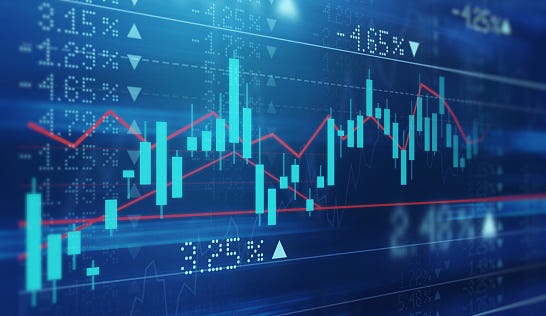
Spoiler Alert
It was hard NOT to do well this year as a simple investor. Even as a completely average boring investor invested in broader index funds or ETFs that track the broader markets, you would’ve still seen your portfolio grow by double-digits. This year we saw the resurgence of retail trading and unicorns within Silicon Valley and Wall Street through FinTech as well. Robinhood and WeBull reported millions of new account openings on their platform this year and payment for order flow, their lucrative revenue stream based on trading volume, hit a record for their balance sheets.
These small yet mighty brokerages are worth more than several major banks combined and have a competitive edge with their FinTech platforms, cult-like following, and a sleek interface! They have democratized finance too easily that much of their young user base (16–35 yrs) went into serious debt and ended up day trading all day.
Thanks to too much time spent at home along with personal finance interest circling around TikTok and Reddit forums, millions of Gen Zers and Millennials have focused on the wrong kind of investing into meme stocks, crypto, and the get rich quick scheme. Investing is a topic anyone can claim they are an expert in since previous experience is irrelevant as lucky trades are mainly based on luck and perfect timing.
Plus everyone thinks they know what they are doing when in reality, most don’t. No one will show you their historical performance track record so they will continue to claim what they want for more views. With a little extra time, boredom, and creativity, they got into the wrong side of ‘fun’ investing. At least they got started in the first place? Earlier than later is the game. Time in the markets > timing the markets. It will eventually be applied.
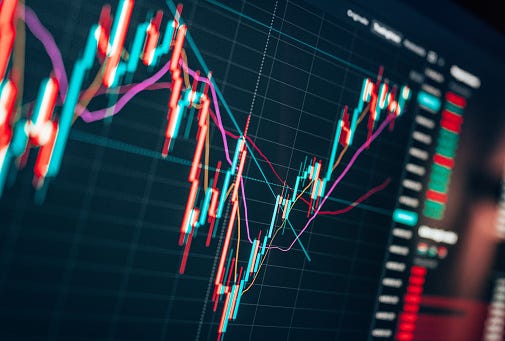
Rapid Recap
We don’t have time to reflect on 2021. It’s in the past. Traders prefer futures. No pun intended.
Although 2021 set an extremely high bar for the markets, in terms of the world, 2022 is full of hope and will most likely be better in terms of our health and prosperity. There’s no trouble beating 2021 this way. Yes, geopolitical tensions, political turmoil in the states, and rising covid cases are nuisances but there is certainly optimism on the horizon. Vaccinations are our best hope.
In terms of money management, although reflecting and predicting the future is difficult, the more one has, the more they should be actively engaged in doing this exercise. You want your money to work for you after all so you need to know where it can be strategically allocated.
Checking in with your portfolio manager is equally as important. They may be a fiduciary as a CFA but if your portfolio isn’t personalized to your liking, there’s no reason you should be paying 10k+ in expense ratios on your 1 million dollar portfolio each year.
2021 exceeded all expectations and portfolio managers cannot afford to slack off anymore.
No more guessing games. It works better than expected but not this year.
Default
After a ~27% return in the S&P 500 and a ~18% return in median U.S. home prices, it’s too easy to believe these days you are an investing master. Never fall into that trap. We are the easiest to fool and investing is all psychological. With pumped-up liquidity, frothy markets, and soaring valuations, venture capitalists poured over $93 billion into startups this year squeezing all the money they could get into companies with no balance sheets, track record, or operations. Welcome to Silicon Valley and Wall Street. The cloud is powerful.
Investing is built behind future prospects, founders’ potential, and how well the team works together. Over 90% of startups fail alone and out of that total, over 50% due to founder disagreement. It’s just like a marriage. Anyone can come up with a simple idea. It’s execution and teamwork that make the dream work. As within a marriage, people eventually get tired of each other and in a startup, that cannot occur since big money is on the line. The punch bowl is filled up with investors clamoring to get a piece of the pie.
It’s hard to forget that not everyone did stellar this year. Two kinds of private investment funds had a rough year in terms of performance, although of course their managers and partners weren’t affected. Since bankruptcies fell to an all-time low, private equity with restructuring and leveraged buyouts didn’t do so hot and hedge funds had a tough time with their short positions in a bull market. It’ll be interesting to see if hedge funds will make a comeback after an embarrassing defeat.
Besides these big shots, if you had the patience to follow Warren Buffett’s advice and put your money in an S&P 500 index fund, you performed decently in 2021. Since the S&P 500 hasn’t had a negative year in a couple of years, if you were a Millennial or Gen Zer who recently started investing, this is one heck of a way to propel your portfolio without any work! Warren swears by this easy painful way towards growth. Hedge funds can learn a thing or two from the less = more approach.
The trick is to avoid selling as much as possible and instead keep more cash on the side to take advantage of the dip when it comes and it will happen. I predict a few 5–10% corrections around 2–3x this year.
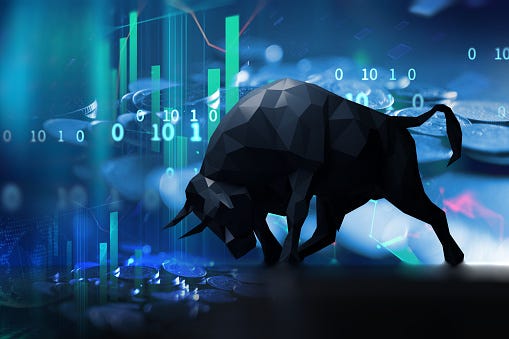
Top-Performing S&P Sectors
Congrats to gasoline. They took the lead in the highest prices adjusted for inflation. This allowed energy to have an impressive year. Hopefully, EV can beat them this year. This sector had a 48% annual gain with soaring oil prices. A few months ago Biden had to tap into U.S. oil reserves to combat rising prices and pump more oil. In addition, during the pandemic, car registrations rose at a record pace with fewer commuters on public transportation increasing the usage of gas even with fewer commutes.
The biggest winner in the S&P was Devon Energy, which gained nearly 190%. Alongside energy, car manufacturers and pharma cruised. Ford, Moderna, and nine others in the index more than doubled their stock price.
Real estate, another hot one, was the second-best performing sector at 42%. I can’t wait to unpack NYC’s explosive year in real estate growth in the coming days. 3Q2021 sold more homes than in the past 32 years! Roughly 1,500 units were sold for properties over $4 million and although many offices are still going hybrid, many residents who left the city for more land and peace have come back along with newcomers! It’s never been busier.
It’s finally becoming a 24 hr city again that will not sleep. I will not forget the quiet moments though. It felt a bit haunted but truly like an oasis.
While in the middle of the country, the Sunbelt states and 18-hour cities of Dallas, Atlanta, and Denver saw a massive resurgence. With so many buyers got priced out of their homes, and were forced to put in offers online through Zillow and Redfin without even getting the chance to step inside with such a massive rush hybrid suburban living.
Not recommended to rush and put in an offer on the most expensive purchase of one’s life but if you really want to seal the deal, time is of the essence in this overheated low inventory overpriced market. On average, 60% of listings were on the market for 2 weeks and over 70% of them were sold over the listing price!
Not to mention the competitiveness in the U.S. between institutional and foreign buyers! This will continue even more in 2022.
Canadian buyers buy across the nation while Europeans tend to focus on the east coast and Asian buyers on the West. With U.S. land being one of the cheapest in the world, here’s another reason prices will be gauged. If you live next to a vacant property in Manhattan or San Francisco, the most expensive cities in the U.S., it is 99% likely a foreigner purchased it to park their money. New York City is once again becoming unlivable for 80% of the country with an uneven wealth divide.
Last but not least, surprisingly or not surprisingly, tech and financials both rose by a mere 33%.
You may be asking what about all the pandemic accelerated at-home stocks or cash cushioned financials?
They had a good year but not an amazing one compared to commodities such as oil and energy. Microsoft rose 51%, and Apple had a 34% gain finally hitting the $3 trillion mark. Big Tech certainly helped lead the S&P 500 to record highs and their stocks were the top six contributors to the S&P’s performance.
Remember Cathie Wood’s big momentum at the start of 2021? Although it was hard to lose during the best year yet, ironically, heavy over-leveraged non-diversifiers in Big Tech such as hedge funds and ARK Innovation ETF did the worst.
Smaller, high-growth tech stocks faltered. Cathie’s ETF declined 24% after shooting up 150% the year before mainly catapulted by Tesla. That fund is heavily weighted in names such as Roku, Twitter, DraftKings, and Palantir. Too bad the fund didn’t go for the overly weighted auto manufacturers Rivian and Lucid, both EV car manufacturers who went public last year and are worth more than Ford, GM, and Toyota today. Rivian’s valuation is roughly $60 billion with Tesla and Lucid behind.
I guess the most valuable companies that predict the future aren’t meant to be in existence in the present! Literally, these EVs have delivered no cars and aren’t used by passengers yet but are worth the same as if they’ve been in the business for centuries!
On the other end, the pandemic’s recovery has been too swift thanks to the Fed’s easy-money policy that “stay-at-home” stocks that boomed at the onset of the pandemic abruptly crashed down in 2021. Starting with Peloton, it lost nearly three-quarters of its value since its peak in Dec 2020 and plunged more than 75% in 2021. A few weeks ago it had a failed marketing plug and earlier in 2021, it recalled its treadmills after a child died using its Tread+ machine. It attempted to slash prices for its equipment to democratize exercise at home although it is still used amongst the top 10%. Lastly, since pre-pandemic, it had dealt with supply chain constraints and customers reported missed deliveries.
A name that became ubiquitous and literally a household name, Zoom lost nearly half of its value in 2021! Although 2021 was a record year for IPOs standing at 976, they stumbled alongside SPACs as VCs have gotten a bit too ambitious and delusional with their prospects in companies that only hold a paper business model canvas.
A fund that tracks public offerings fell more than 9% for its worst performance in three years. My favorite retail and overly priced Gen Z names from Allbirds to Sweetgreen, Rent the Runway to Warby Parker spiked during their first few trading days of trading and we will see how they perform in Q1 2022. Many missed estimates since its debut, especially Airbnb which is seen as overweight.
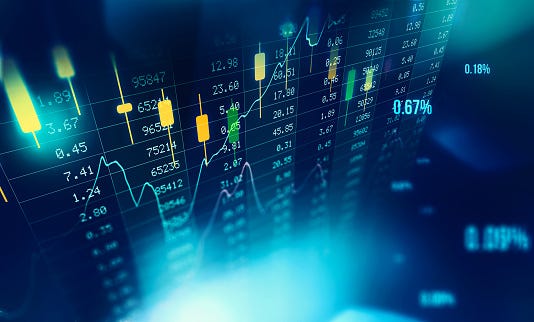
2022 Split?
Analysts, economists, investors, you and I, you name it are afraid the good times won’t last forever. Thankfully being invested is already a massive step ahead towards real freedom. You are never truly wealthy without being invested or a business owner. With massive tax incentives, benefits, and passive income, it’s a source of stability that is irreplaceable.
Just like lofty cool startups made us delusional, 2021 made us feel too clever with too much luck rolling around. One of the worst things you can embody as an investor is embracing your emotions and believing you are smarter than the market. Fighting the Fed may be worse but believing you can outperform the market consistency is a recipe for disaster.
There are various headwinds and tailwinds propelling and slowing us down for next year which mainly revolve around the Fed’s hawkish tapering plans to slow down bond purchasing and perform 3 rate hikes.
In an effort to curb inflation and allow supply to catch up with demand which spiking covid cases are helping in some regard, this may cause a brief correction in the short term as growth stocks such as biopharmaceuticals and tech heavily rely on short term borrowing to fuel future expectations and valuations.
Case By Case
The best way to predict the future is to create it!
There is a lot to be excited about. Increased inoculation across the globe, covid pills, and advanced shots, but as every year brings about, there’s an abundance of unpredictability, turmoil, anger, and a looming bubble that may pop anytime.
Valuations haven’t been this high since the Dotcom era, a period that lasted roughly 2 years, 18 months from 1998 to 2000 when internet stocks reached soaring valuations with no cash on hand and unrealistic expectations that ended up crashing down.
Since corporate earnings knocked it out of the park this year, I believe they are likely to grow by roughly ~15–20% in 2022, certainly not ~60% as in 2021. Corporate and economic profit growth won’t accelerate as high since midterm elections are coming up, it’s still an endemic, and excess froth and valuations may come poping. Ironically companies, especially those that make up the S&P 500 have soared despite and because of the pandemic. S&P 600 (small cap) and S&P 400 (mid-cap) companies didn’t do as well since they had smaller cash reserves and less government stimulus but they still faired exceptionally well.
Revenues and profit margins have been rising double digits since 2021 for consumer staples, defensive, and several cyclical companies including airlines. Consumers are relentless. I believe consumer spending will slow down as pent-up demand was too real in the summer months last year. Now they’ve purchased their dream home and set up their hybrid workstations so what else could they possibly need to buy at this point?
As a result, without glancing over at what Wall Street’s estimates are since they don’t tend to be on the money anyways in terms of historical predictions, I expect the S&P 500 market index to rise by a sensible 5–15% to roughly 5,008–5,013.
There definitely won’t be a 27% increase but we still have to keep our hopes up. In addition, I believe corporate earnings will grow by 15–20%. The S&P 500 is currency trading at a higher earnings multiple than usual at roughly 30x. This number will be fully unpacked in 1Q2021.
With higher valuations, the more difficult it is for equities to outperform their historical averages leading to concern for the 10-year outlook from many financial firms and banks.
As a result, with the combination of forty valuations, excessive liquidity, curbing of Fed’s stimulus, three years of above-average returns, stellar corporate earnings growth, and hyperinflation, don’t get too excited about next year. You’ll actually have to try this time. Not everything that doesn’t have a business model won’t go up.
Thankfully diversification is your friend and cash may turn into king once again. It’s always recommended to keep at least 20% of your portfolio in cash. This is hard to digest for Millennials who’ve gone through 2 recessions but it is a prudent choice in order to avoid eviction, Ramen for 3 meals, and no home. Prepare for the worst, hope for the best.
Diversification and investing in alternatives isn’t just for affluent investors. Affluent investors are made for hedge funds and according to 2021, you may not want to bother.
Everything from farmland (FarmRise) to artwork (Masterworks), crowdfunding (CrowdStreet) to venture debt/ capital, and real estate (REITS-via the market, Fundrise) are offered to anyone with as little as a few dollars.
What’s certain is uncertainty.
The S&P 500 by many is predicted to be flat and extremely boring in 2022 but isn’t that better for our money? Volatility is a given but it’s as volatile not to invest as to invest. This may be a hard year to swallow as we’ve dealt with 3 phenomenal years. This may very well be a down year as well. If you were confident and strong enough not to sell and instead ride the waves during the 35% correction from Feb to March 2020, you can endure anything. Being conservative is prudent, not silly.
Keep cash on the side for great buying opportunities. A missed opportunity is the most expensive one. A correction of 5–10% is bound to come as the Fed does its moves and staying in your positions may be your best bet in this case. Keep your equity exposure and fixed-income allocation reasonable. You may even want to adjust it to the safer side while you can unless you are able to stomach the short-term losses and don’t need the funds right away. Look into Treasury I Bonds for a guaranteed 7% return. At least that’ll give you peace of mind. Never be afraid to get more defensive or foolproof. No one can predict the future so safeguard yourself.
I hope pandemic accelerated stocks will make a comeback. I enthusiastically love my Peloton and I believe Zoom will be in our lives for the foreseeable future along with telecom and video conferencing apps. Everything is moving to the cloud, including banks. Big Tech will continue to dominate as we all live digital lives but may be under further scrutiny with lawmakers on Congress. Yet at the moment Big Tech doesn’t seem to be on the top of the agenda as Powell and Pelosi have engaged in insider training themselves!
Get ready to see earnings potential and discount rates for valuations go down as more expensive borrowing kicks in.
At least we can now tell if a negative cash-burning business will actually be profitable or is just artificially inflated. There are pros and cons to everything. After all, it’s all relative in finance.

